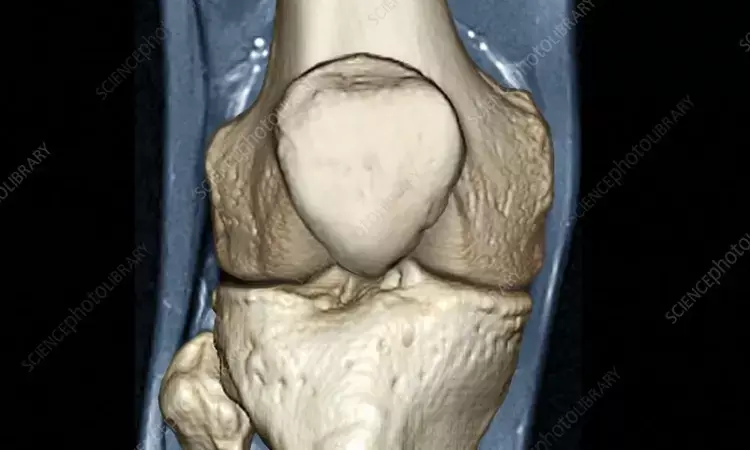- Home
- Medical news & Guidelines
- Anesthesiology
- Cardiology and CTVS
- Critical Care
- Dentistry
- Dermatology
- Diabetes and Endocrinology
- ENT
- Gastroenterology
- Medicine
- Nephrology
- Neurology
- Obstretics-Gynaecology
- Oncology
- Ophthalmology
- Orthopaedics
- Pediatrics-Neonatology
- Psychiatry
- Pulmonology
- Radiology
- Surgery
- Urology
- Laboratory Medicine
- Diet
- Nursing
- Paramedical
- Physiotherapy
- Health news
- Fact Check
- Bone Health Fact Check
- Brain Health Fact Check
- Cancer Related Fact Check
- Child Care Fact Check
- Dental and oral health fact check
- Diabetes and metabolic health fact check
- Diet and Nutrition Fact Check
- Eye and ENT Care Fact Check
- Fitness fact check
- Gut health fact check
- Heart health fact check
- Kidney health fact check
- Medical education fact check
- Men's health fact check
- Respiratory fact check
- Skin and hair care fact check
- Vaccine and Immunization fact check
- Women's health fact check
- AYUSH
- State News
- Andaman and Nicobar Islands
- Andhra Pradesh
- Arunachal Pradesh
- Assam
- Bihar
- Chandigarh
- Chattisgarh
- Dadra and Nagar Haveli
- Daman and Diu
- Delhi
- Goa
- Gujarat
- Haryana
- Himachal Pradesh
- Jammu & Kashmir
- Jharkhand
- Karnataka
- Kerala
- Ladakh
- Lakshadweep
- Madhya Pradesh
- Maharashtra
- Manipur
- Meghalaya
- Mizoram
- Nagaland
- Odisha
- Puducherry
- Punjab
- Rajasthan
- Sikkim
- Tamil Nadu
- Telangana
- Tripura
- Uttar Pradesh
- Uttrakhand
- West Bengal
- Medical Education
- Industry
Pre operative 3D CT scan templating predicts accurate Implant size and alignment in robot assisted TKA

Nearly 20% of Total knee Arthroplasty patients remain dissatisfied. This is a major concern in 21st century arthroplasty practice. Accurate implant sizing is shown to improve the implant survival, knee balance and patient reported outcome.
Sanjay Bhalchandra Londhe et al conducted a study to assess the efficacy of pre-operative three-dimensional (3D) CT scan templating in a robot-assisted (RA) TKA in predicting the correct implant sizes and alignment.
The authors prospectively collected data in a single center from 30 RA-TKAs and assessed. Inclusion criterion was patients with end stage arthritis (both osteoarthritis and rheumatoid arthritis) undergoing primary TKA. Patients undergoing revision TKA and patients not willing to participate in the study were excluded.
Preliminary study of ten patients had indicated almost 100% accuracy in determining the implant size and position. Sample size was estimated to be 28 for 90% reduction in implant size and position error with α error of 0.05 and beta error of 0.20 with power of study being 80.
Post operative radiographs were assessed by an independent observer with respect to implant size and position. The accuracy of femoral and tibial component sizing in the study was compared with the historic control with Chi-squared test. The p value < 0.05 was considered significant.
Key findings of the study were:
• The study included 7 male and 23 female patients.
• The mean age of the study group cohort was 69 years.
• The mean body mass index (BMI) was 29.1 (range 20.1–38.5).
• The pre-operative CT scan 3D templating accuracy was 100% (30 out of 30 knees) for femoral component and 96.67% (29 out of 30 knees) for tibial component.
• According to Peek's criteria, no femoral or tibial implant was found to be undersized/ oversized.
• The implant position and limb alignment was accurate in 100% of patients.
• The accuracy of femoral component and tibial component sizing is statistically significant (Chi-squared test, p value 0.0105 and 0.0461, respectively).
"The results of our study clearly demonstrate the efficacy of the pre-operative 3 D CT scan-based templating in accurately predicting the actual femur and tibia implant sizes. Also, the pre-operative templating helps to achieve optimal implant position and limb alignment. This may have a potential to improve operating room efficiency and achieve long-term better patient reported outcomes due to improved implant survival. Continuation of this study is necessary to evaluate the effect of these benefits on long term implant survival and patient reported outcomes" the authors commented.
Further reading:
Efficacy of the Pre operative Three Dimensional (3D) CT Scan Templating in Predicting Accurate Implant Size and Alignment in Robot Assisted Total Knee Arthroplasty
Sanjay Bhalchandra Londhe, Santosh Shetty et al
Indian Journal of Orthopaedics
https://doi.org/10.1007/s43465-022-00742-0
MBBS, Dip. Ortho, DNB ortho, MNAMS
Dr Supreeth D R (MBBS, Dip. Ortho, DNB ortho, MNAMS) is a practicing orthopedician with interest in medical research and publishing articles. He completed MBBS from mysore medical college, dip ortho from Trivandrum medical college and sec. DNB from Manipal Hospital, Bengaluru. He has expirence of 7years in the field of orthopedics. He has presented scientific papers & posters in various state, national and international conferences. His interest in writing articles lead the way to join medical dialogues. He can be contacted at editorial@medicaldialogues.in.
Dr Kamal Kant Kohli-MBBS, DTCD- a chest specialist with more than 30 years of practice and a flair for writing clinical articles, Dr Kamal Kant Kohli joined Medical Dialogues as a Chief Editor of Medical News. Besides writing articles, as an editor, he proofreads and verifies all the medical content published on Medical Dialogues including those coming from journals, studies,medical conferences,guidelines etc. Email: drkohli@medicaldialogues.in. Contact no. 011-43720751


